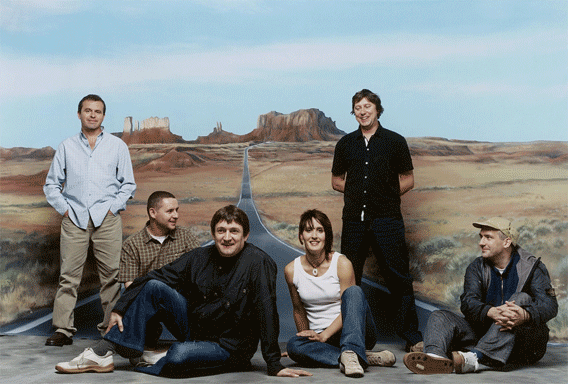The Beautiful South, formed in Hull in 1988, emerged from the ashes of the Housemartins. Founders Paul Heaton and Dave Hemingway—respectively, the singer and drummer of that band—joined forces with guitarist and songwriting partner Dave Rotheray, bassist Sean Welch, and drummer Dave Stead to build a new, richer musical canvas.
Origins and Early Years
The Housemartins had already made waves with socially charged, gospel-tinged pop. When they disbanded at their peak, Heaton and Hemingway channeled their sharp social commentary into a new direction. Naming the new group “The Beautiful South” was itself a satirical nod to their gritty Yorkshire background.
Just a year later, their debut album Welcome to the Beautiful South dropped (October 1989). It wielded jaunty indie-pop melodies that masked deeply cynical lyrics about themes like domestic violence, nationalism, and love as a commercial product. Its single “Song for Whoever” struck a tone of satirical genius, framing romantic devotion as transactional songwriting—peaking at #2 on the UK charts and earning a gold certification decades later.
Briana Corrigan, who began as a guest backing vocalist, soon became a full member, bringing a contrasting sweetness to the vocal mix.
Rise Through Sharp Irony
Their second album, Choke (1990), carried on the streak, spawning the band’s only UK #1 single, the duet “A Little Time,” featuring Hemingway and Corrigan. The music video—even after a domestic dispute theme—won Britain’s Best Video at the 1991 BRIT Awards.
When Choke charted, it held strong for 22 weeks and earned accolades from both critics and publications such as Q magazine, who later included it among the 100 best albums of 1986–94.
Evolution of Their Line-up and Sound
After Corrigan’s departure, vocalists Jacqui Abbott (albums 4–7) and later Alison Wheeler (final 3 albums) stepped in, infusing varying emotional textures into the music. The band released a steady stream of albums through the ’90s and early 2000s—like 0898 Beautiful South, Miaow, Blue Is the Colour, Quench, Painting It Red, Gaze, and Golddiggas, Headnodders and Pholk Songs—exploring sonic moods from sardonic to soulfully melancholic.
The 1996 album Blue Is the Colour became their best-selling studio album. It tackled heavy topics—alcoholism in “Liars’ Bar,” capitalist critique in “The Sound of North America,” and reflective regret in “Alone.” Singles like “Rotterdam” and “Don’t Marry Her” soared into the UK top 10.
Final Acts and Legacy
Superbi, released in May 2006, was their tenth and final studio effort. Featuring tracks such as “Manchester” and “The Rose of My Cologne,” the album entered the UK charts at number 6 and heralded the end of their journey when they split in early 2007.
Over nearly two decades, The Beautiful South became synonymous with immaculate pop craftsmanship—bright melodies colored by biting irony, domestic tensions, heartbreak, and societal observation.
After the Split
Following the split in 2007, former members Hemingway, Wheeler, Stead, and others formed The South (initially The New Beautiful South), keeping the legacy alive live on stage and even releasing the Sweet Refrains album in 2012. Paul Heaton reunited with Jacqui Abbott in 2013, and their continued collaborations have kept that unique spirit alive. Songs remain staples on stage, with tours and live performances of fan favorites like “Song for Whoever,” “Perfect 10,” “Rotterdam,” and “Old Red Eyes Is Back” drawing nostalgic crowds.
Why The Beautiful South Endures
- Lyrical Subversion: Their pop melodies draw you in—Heaton and Rotheray’s pen stings softly. Love songs are skewered; clichés become social critique.
- Vocal Variety: Male-female vocal duets offered narrative tension and emotional layering.
- Musical Versatility: Jumping from indie-pop to soul to melancholic rock, they kept evolving.
- Yorkshire Roots with Universal Reach: Their working-class lens made their commentary sharp, witty, and powerfully resonant.
Suggested Structure for Your Blog Post
- Introduction: Set the tone—bright pop with ironic bite.
- Formation and Housemartins Legacy: Context about where they came from.
- Debut & Early Success: Welcome… and Choke, with their irony and chart impact.
- Changing Voices, Maturing Themes: Highlight key albums like Blue Is the Colour.
- Final Steps and Split: The closing of an era with Superbi.
- Life After: The South, Heaton & Abbott reunions.
- Legacy and Influence: What makes them timeless.

